Have you ever experienced that moment of sudden awareness, where something previously unnoticed becomes strikingly apparent? For me, it was a summer when fiddler crabs seemed to be everywhere. Despite countless visits to coastal areas, these tiny creatures had somehow escaped my attention until a visit to the Wetlands Institute in Stone Harbor. After that initial encounter, I began spotting them in abundance, a constant, bustling presence in the salt marshes and mudflats.
Fiddler crabs are diminutive crustaceans inhabiting saltwater and brackish water environments such as marshes, beaches, and mudflats. These colonial and social animals are diurnal, meaning they are most active during daylight hours, creating a lively spectacle across their habitats.
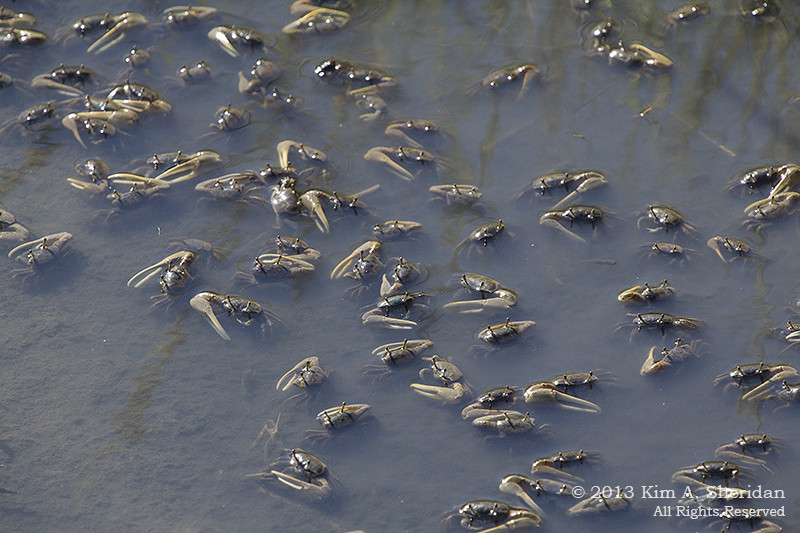 Fiddler crabs scurrying on the mudflats at Forsythe National Wildlife Refuge
Fiddler crabs scurrying on the mudflats at Forsythe National Wildlife Refuge
The male fiddler crab is particularly distinctive due to its dramatically enlarged claw, a feature central to what could be termed the “Crab Dance”. This oversized appendage is not for feeding; instead, it plays a crucial role in attracting females and engaging in ritualized displays of combat with rival males. The waving motion of this claw, a key element of the crab dance, bears a striking resemblance to movements found in Tai Chi, a testament to nature’s fascinating choreography.
FUN FACT: Fiddler crabs undergo molting as they grow, shedding their exoskeletons to accommodate their increasing size. Remarkably, if a male fiddler crab loses his prominent claw, a new one will regenerate during the next molt, and it will appear on the opposite side of his body. The rhythmic motion of the smaller claw against the larger one during feeding and other activities is reminiscent of someone playing a fiddle, hence the crab’s common name. This rhythmic movement is also integral to the captivating crab dance.
Fiddler crabs are efficient feeders, employing a method of sifting through mud or sand to extract algae and organic matter. They scoop up sediment (as seen on the left in the image below), process it to remove nutrients, and then deposit the leftover sand in small pellets (as seen on the right). Female fiddler crabs, like the one pictured, utilize both claws in rapid alternation for feeding. In contrast, the male’s large claw is cumbersome for feeding, forcing them to eat with only their smaller claw, a trade-off for the advantages of their prominent display claw in the crab dance.
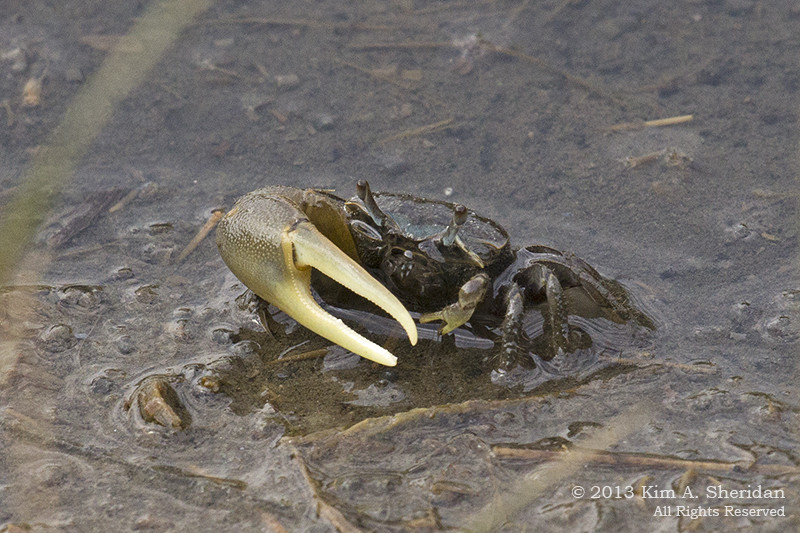 Female fiddler crab feeding on the marsh, Stone Harbor Wetlands Institute
Female fiddler crab feeding on the marsh, Stone Harbor Wetlands Institute
Here is a fiddler crab positioned near its burrow, with a collection of excavated sand pellets beside it. These crabs meticulously construct their burrows, carrying away sand pellet by pellet, sometimes as far as five feet from the entrance before returning for more. These burrows can extend as deep as two feet, a considerable engineering feat for a creature that is only about an inch in length. These burrows are not merely homes; they are essential for survival, providing refuge during high tides and protection from predators.
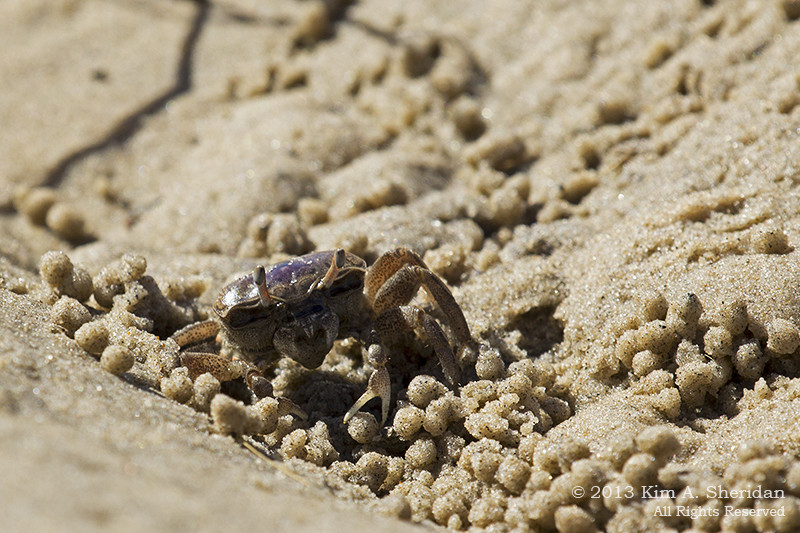 Fiddler crab guarding its burrow entrance near Corson's Inlet
Fiddler crab guarding its burrow entrance near Corson's Inlet
The marsh environment, as seen below a Semipalmated Sandpiper, is characterized by a dense network of crab burrows. These burrows are critical shelters, offering protection not only from potential predators but also from the constant fluctuations of the tides. Fiddler crabs possess biological clocks that are finely tuned to the tidal cycles. As high tide approaches, they instinctively retreat into their burrows, sealing the entrance with mud to create a secure haven.
 Semipalmated Sandpiper foraging near fiddler crab burrows at Cape May
Semipalmated Sandpiper foraging near fiddler crab burrows at Cape May
In the social dynamics of fiddler crabs, interactions can be complex. In the image below, a smaller crab tentatively approaches a larger female before attempting to quickly pass by her. However, the larger female responds by mirroring the smaller crab’s movement, scurrying alongside it. This parallel movement, sustained for a distance, raises questions about its purpose. Could it be a territorial dispute? Or is the smaller crab a juvenile, and the interaction something else entirely? Some aspects of wildlife behavior remain enigmatic, offering glimpses into the unsolved mysteries of nature.
 Possible territorial interaction between fiddler crabs at Corson's Inlet
Possible territorial interaction between fiddler crabs at Corson's Inlet
The world is a vast and perilous place for a small fiddler crab. They face threats from a variety of predators, including larger crabs like the marsh crab, diamondback terrapins, and even mammals such as mink and raccoons. Avian predators also pose a significant risk, with Great and Snowy Egrets, Great Blue Herons, terns, and gulls all preying on fiddler crabs. Survival in the marsh requires constant vigilance and adaptation.
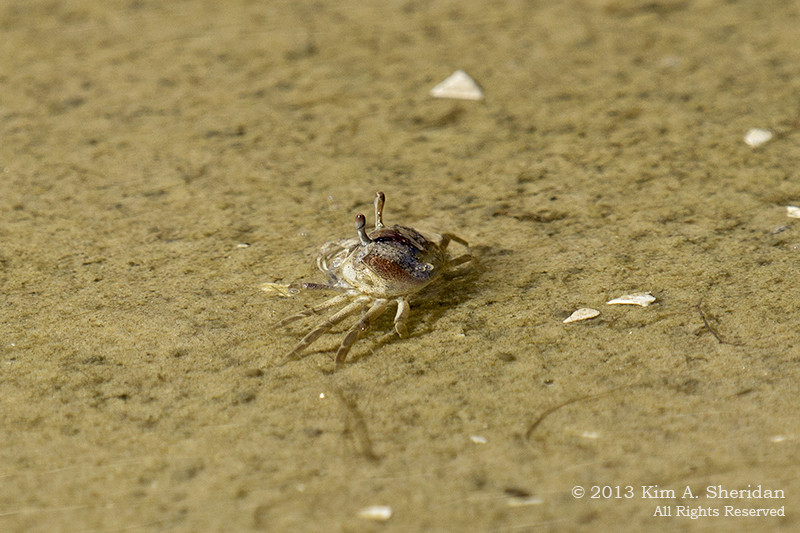 Fiddler crabs in their habitat at Corson's Inlet
Fiddler crabs in their habitat at Corson's Inlet
Sometimes, however, the fiddler crab becomes the aggressor. In the image below, a surprising role reversal seems to be unfolding. It’s unclear whether the gull has captured the crab, or if the crab has managed to seize the gull in a defensive maneuver. Such moments of unexpected interaction highlight the constant struggle for survival and the unpredictable nature of predator-prey relationships in the wild.
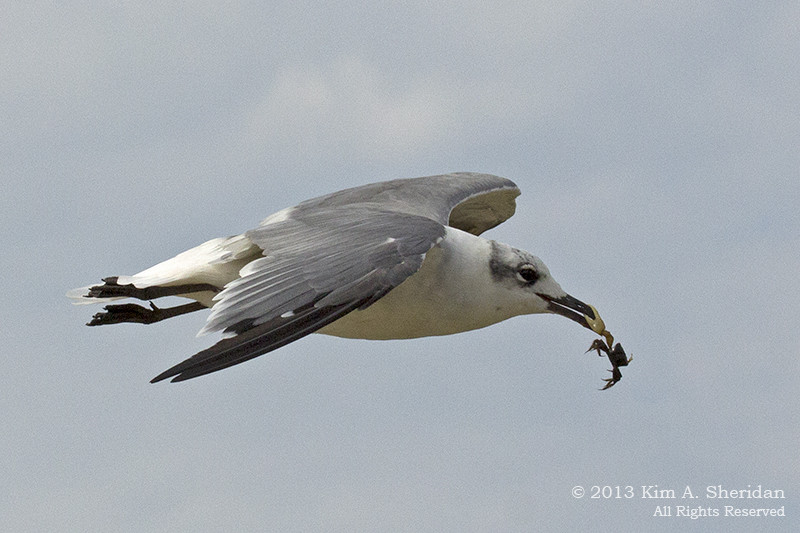 A gull and a fiddler crab in a possible standoff at Stone Harbor
A gull and a fiddler crab in a possible standoff at Stone Harbor
To broaden our perspective on crab diversity, consider the flat-clawed hermit crab, a different type of crustacean found in similar coastal habitats. Hermit crabs are characterized by their soft bodies, which necessitate living within the protective confines of discarded shells, typically those of sea snails. The shark’s eye moon snail shell, a common find on beaches, is a favored home. Finding a hermit crab occupying one of these shells is always a delightful discovery. Hermit crabs are generally nocturnal, so this individual was likely resting during the daytime.
 Hermit crab inhabiting a moon snail shell at Corson's Inlet
Hermit crab inhabiting a moon snail shell at Corson's Inlet
FUN FACT: Hermit crabs must regularly seek out larger shells as they grow. This process of shell acquisition can be quite competitive. Hermit crabs engage in shell “shopping,” assessing various empty shells for suitability. Competition for desirable shells can lead to conflicts, and sometimes groups of hermit crabs will target a single crab with a coveted shell. Remarkably, they sometimes form “vacancy chains.” When a new, larger shell becomes available, it can attract a gathering of hermit crabs. The largest crab will claim the new shell, vacating its old one, which is then taken by the next largest crab, and so on, creating a domino effect of shell swapping down the line.
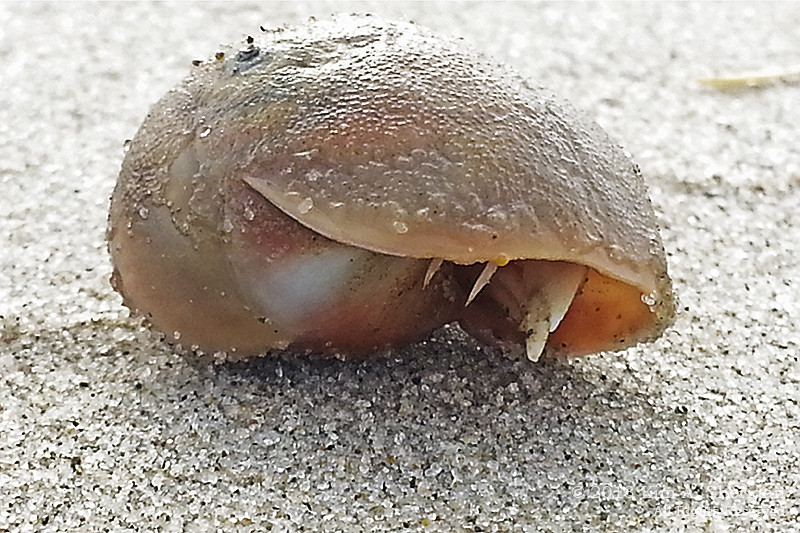 Hermit crab walking on the beach at Corson's Inlet
Hermit crab walking on the beach at Corson's Inlet
Take the time to observe the smaller aspects of the natural world. You never know what captivating behaviors, like the intricate crab dance, or fascinating creatures you might discover when you pay close attention to the details of life around you.
